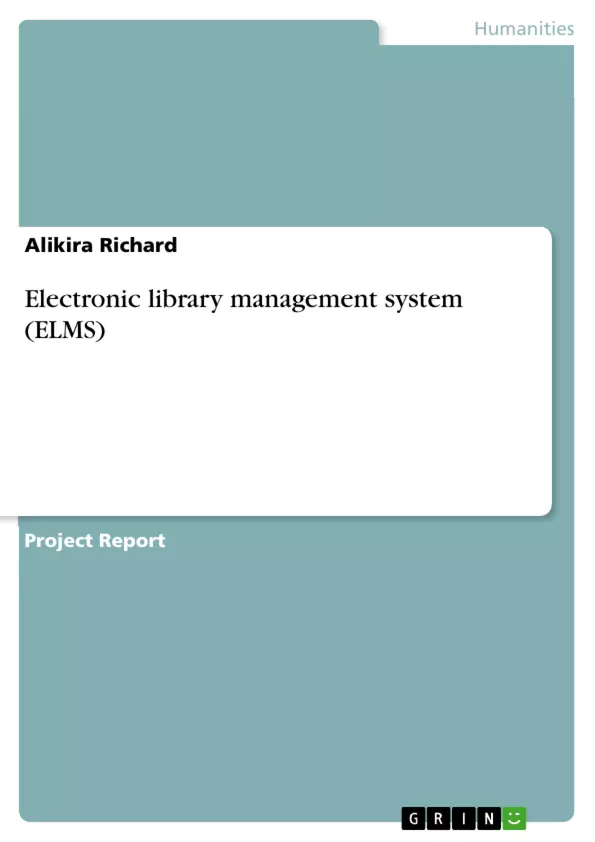CHAPTER ONE PROBLEM AND ITS SCOPE
Background
According to Robertson (2004), Library management system (LMS) known as an automated Library System is software that is developed to handle basic functions of a Library, and provides a complete solution for the administration of a library’s technical functions and services to the public. These functions range from; tracking the assets held by the library, managing lending, through to supporting the daily work over. These systems are used in almost all libraries large and a small.
According to Kampala International University Dar es Salaam Campus website www.kiu.ac.tz, Kampala International University Dar es Salaam Campus began operations in January 2009 at Quality Plaza along Pugu road. Currently, the university centre is situated on a 100 acre piece of land, at Gongo la Mboto area in Ilala District, 7 Km from Mwalimu Julius Nyerere International Airport along Pugu road. The spacious campus offers an ideal university learning atmosphere and plenty of room for further expansion. The first phase of development is almost complete. It is a constituent college of Kampala International University found in Uganda. The University envisions becoming a prominent International in the great lakes region and beyond, nurturing talents in multicultural learning environment and advancing market-driven courses. Currently, Kampala International University Dar salaam Campus uses a manual library management system. This wastes a lot of time for students and librarians especially when students are borrowing or returning books. Currently when a student wants to borrow a book, he/she goes to the counter of the reference section and asks the librarian for the book he/she wants. If the book is in the stock, the librarian gets the book, register the details of the book and the student and then give the book to the student. This process, especially during busy hours of the day 11-5, delays students.
Problem statement
In many institution of learning, library management has become a problem due to the continued use of manually supported system. Kampala International University Dar salaam Campus is among those affected by the above problem due to the increased number of students. The current system makes it hard to serve students effectively. This is seen when students queue for not less than 10 minutes to borrow a book from a librarian who has got to register each student and the book borrowed manually hence wasting a lot of time. It is this perceived inefficiency and its associated high cost of labor in hiring several library assistants that rendered this study important.
Objectives
Main objective
The main objective was to develop an Electronic Library Management System, with a search functionality to facilitate the search and management of library resources.
Specific objectives
1. To examine the weaknesses of a manual Library Management system.
2. To identify requirements for Library Management System.
3. To develop a Library Management System.
Research question
1. What are the weaknesses of a Manual Library Management System?
2. What should an Electronic Library Management System (ELMS) do?
3. Which Library Management System should be developed?
Scope
The study was carried out at Kampala International University Dar es Salaam Campus to identify requirements of an Electronic Library Management System (ELMS). Respondents included librarians and students. Data sources were respondents, books, and internet.
Significance of the Project
This study helps the librarians to keep track of library resources properly:-
1. The Library Management system enables Librarians to keep track of available books.
2. The Library Management System can easily keep track of Library users.
3. The Library Management System makes it easier for the librarian to track those who have borrowed books and have not returned them.


